Social media is changing constantly and, lately, no platform has exemplified that as much as Twitter. 2022 was a bizarre year for the social network, with complex leadership changes keeping Twitter users and brands both on their toes. Still, even amidst the uncertainty, engagement remained largely stable and certain industries even continued to thrive on the popular social media platform.
According to our 2023 Social Media Industry Benchmark Report, the median Twitter engagement rate across industries was 0.035% last year, a 5.4% decline from 2021 that seems especially minor in comparison to Instagram’s 29.8% drop.
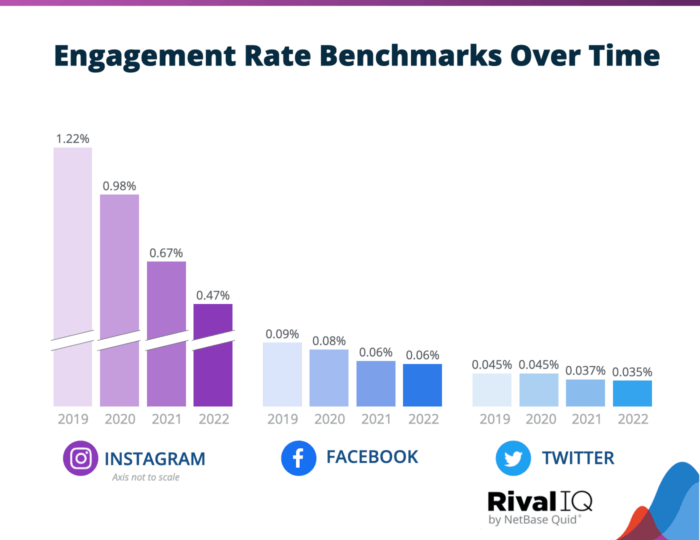
In analyzing over 2,100 companies from 14 different industries on Twitter, the recent report also identified the median engagement rates of each industry. That got us thinking. Which industries on Twitter scored the highest engagement rates and why? What lessons can we learn from them about implementing a social strategy that inspires engagement?
To answer those questions, we’re looking at the three most-engaging industries on Twitter and diving into some examples from top brands. First up? Sports teams.
Top 3 Industries on Twitter
1. Sports Teams: Joining Live Conversations
With an engagement rate per tweet of 0.078%, sports teams beat out 13 other industries as the most engaging industry on Twitter.
Partly contributing to its success was its frequent activity. Sports teams had the second highest median posting frequency at 47.1 tweets per week, or more than 12x the median across all industries. It’s likely that, by having a regular presence on their Twitter followers’ timelines, sports teams established familiarity and inspired greater engagement.
However, tweeting often definitely doesn’t guarantee engagement. Just look at how media companies fared. Posting around 70.2 tweets per week, media brands posted the most out of all industries. And yet, the industry had the worst median engagement rate (0.009%).
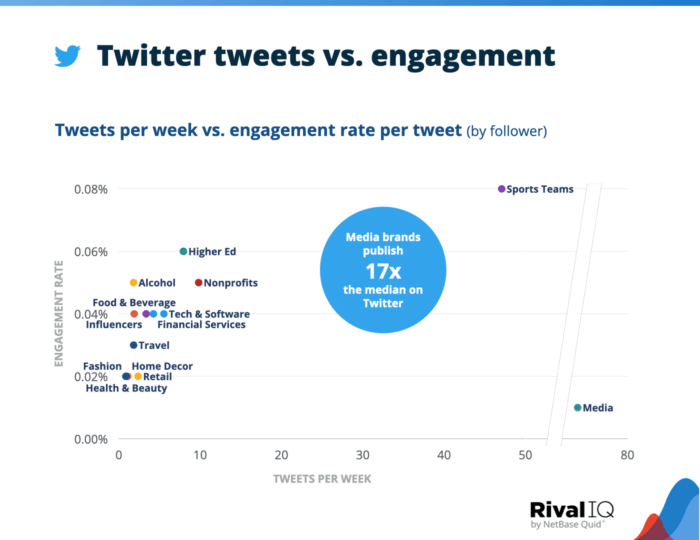
The lesson here? Tweeting often can pay off — but only if you contribute value to your target audience’s Twitter experience. Spam your followers with loads of irrelevant tweets and your engagement rate may tank.
See how you're doing on Twitter with a free Rival IQ trial. 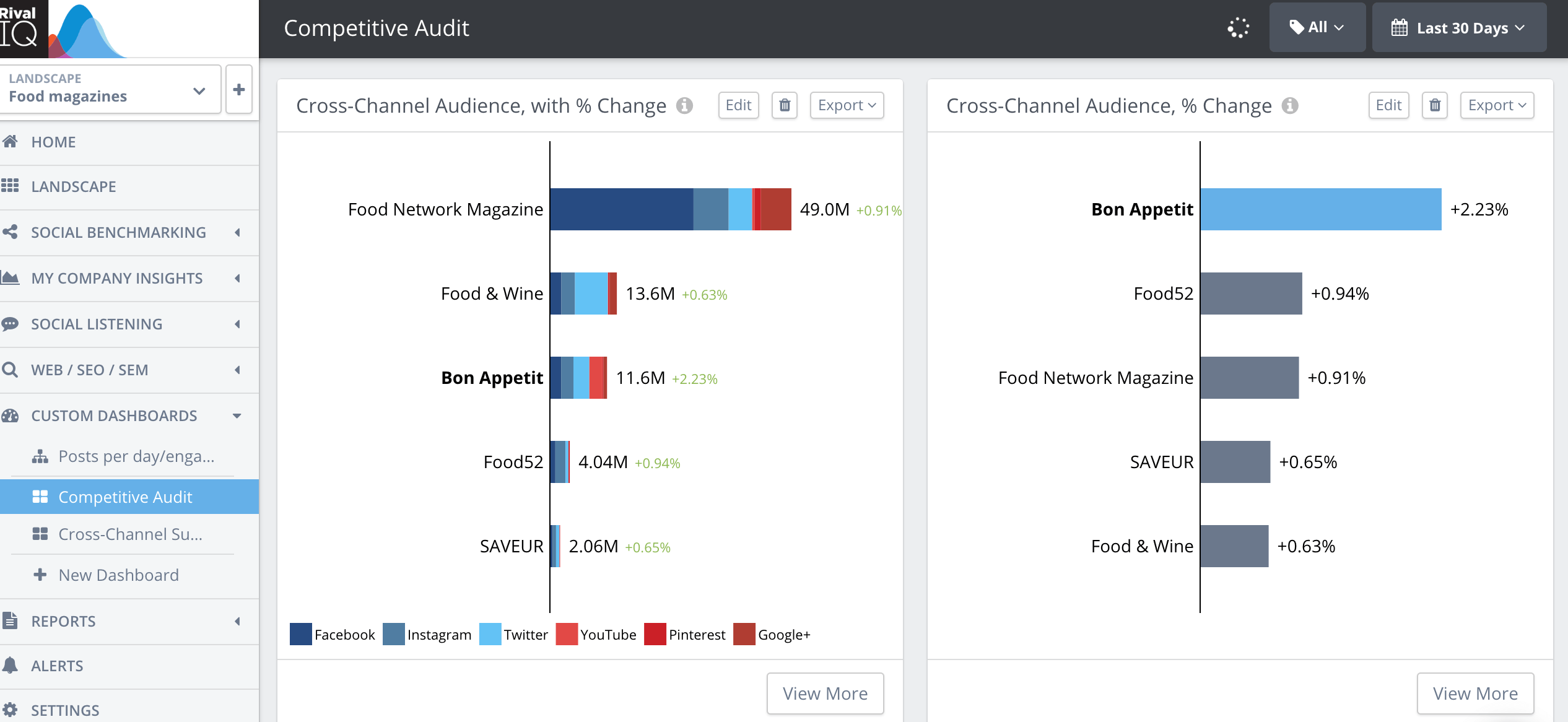
Luckily for sports teams, there were plenty of opportunities to deliver relevant content to their committed fanbases. Just amongst themselves, sports lovers on Twitter are a community of highly active users, especially during games, big announcements, and so on. Rather than trying to stand out from all that noise, sports teams thrived by simply joining the conversation.
The Los Angeles Football Club is one team that did a great job at this.
LAFC’s Twitter account tends to tweet just like any excited fan would, from reposting iconic plays to hyping up their favorite players to “screaming” in all caps. The approach has earned them impressive rates of engagement, such as the tweet below with its 12.8% engagement rate. That’s 164x times the sports team industry median and nearly 365x the median for all industries!
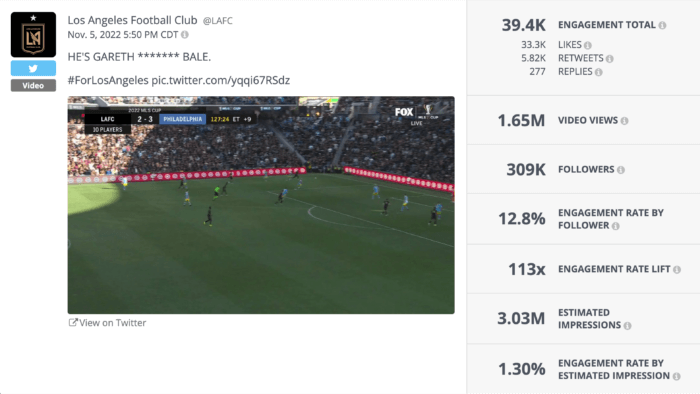
Another big part of naturally joining in on the excitement is live-tweeting exciting moments. When they tweeted in support of their player when he scored a goal during the USA vs. Wales World Cup match, LAFC scored its most engaging tweet of the year.
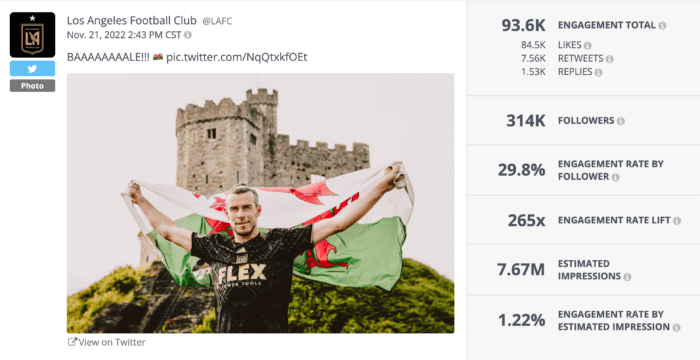
While there were some negative comments about an American football club supporting a Wales player, the positive outweighed it all as the post earned more than 84K likes and a whopping 29.8% engagement rate. Clearly, tweeting during moments when your Twitter followers are likely to be active and joining those conversations in real-time is a great way to better engage with your audience.
2. Higher Ed: Celebrating Big Moments
Coming in second of all the industries we studied was Higher Ed with its median engagement rate of 0.058%.
With a median posting frequency of 7.9 tweets per week, universities and colleges tweeted more than twice as often as all industries’ collective median of 3.91 tweets per week. While we’ve established that constant posting isn’t a surefire way to gain engagement (sorry media brands!), people tend to embrace frequent good news — and that’s exactly what higher ed delivered.
Celebration was a prevalent theme amongst higher education’s top-engaging tweets. The industry stood out by posting about news and moments that inspired audiences to be proud as students, faculty, alumni, or fans.
For instance, the University of San Francisco’s most engaging tweet of 2022 was an announcement about the next dean of the School of Management. Driven by plenty of congratulations in the replies and hundreds of likes, the USF tweet’s engagement rate was 99x greater than the industry median.
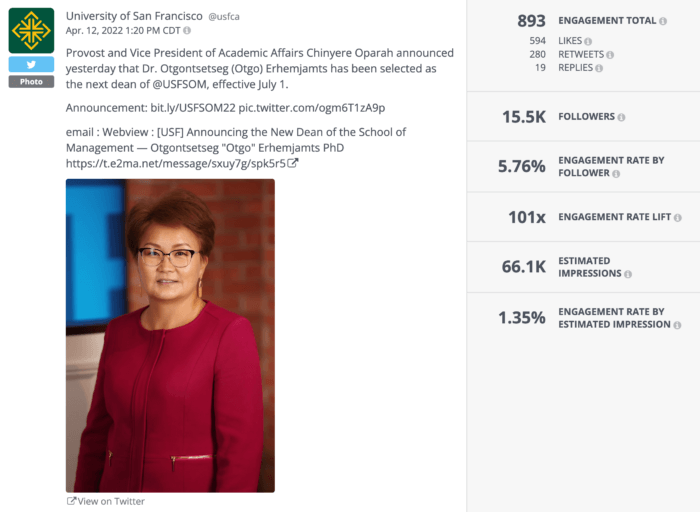
Another example of exciting, positive news bringing in engagement was when Louisiana State University posted about the literal earth-shaking effect that fans had when the football team scored.
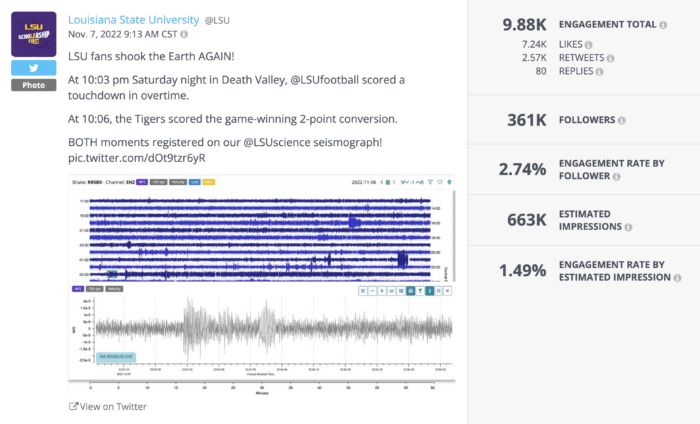
With an engagement rate by follower of 2.74%, LSU’s tweet shows how brands can get creative with their Twitter content. Think outside of the box to find those not-so-typical moments to celebrate. People enjoy seeing interesting and exhilarating news. It encourages them to engage, share, and join in on the positivity, whether that’s through congratulating an esteemed faculty member or getting excited over just how loud their school spirit can be.
3. Nonprofits: Growing Support Through Video
The nonprofit industry ranked third overall in terms of engagement, earning a median engagement rate per tweet of 0.050% or a little over 1.4x the median across industries. At 9.8 tweets per week, nonprofits were also one of the most active industries, behind only media and sports teams.
Dedicated to their mission, nonprofits have no shortage of important news, resources, and campaign updates to provide to their target audience on the social media site. The challenge, then, is presenting all of that critical information in a way that catches people’s attention and inspires them to engage.
As it turns out, one of the most effective mediums on Twitter for nonprofits was video. The Elton John AIDS Foundation, for example, saw its highest engagement rate of the year with a tweet that featured a video that dynamically showed the impact of the MenStar Coalition’s efforts.
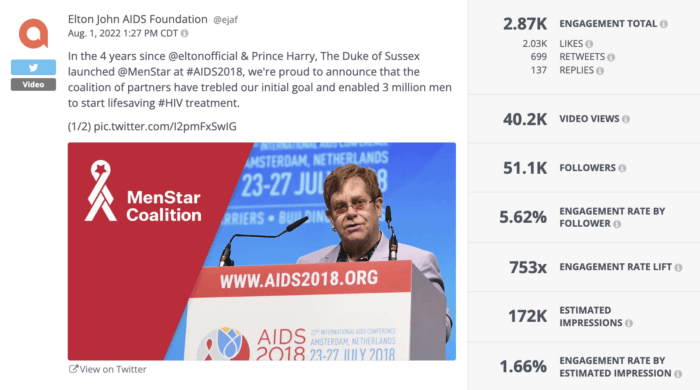
With an engagement rate of 5.62%, the tweet’s engagement was 112x greater than the median for the nonprofit industry — and this was no fluke. As a whole, nonprofit tweets featuring videos ended up earning the highest median engagement rate compared to other tweet types, including statuses and tweets with photos or links.
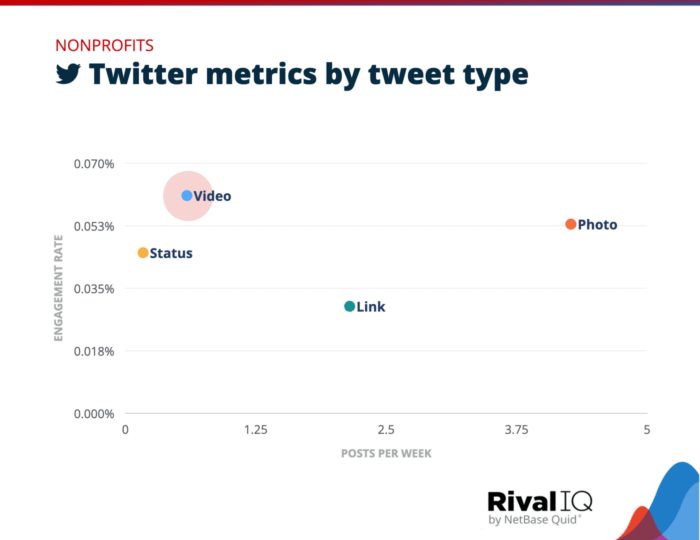
If you think about it, the effectiveness of video makes sense. Statistics or static photos are one thing, but being able to see and hear a nonprofits’ impact through video understandably makes a huge difference in prompting viewers to engage.
The takeaway? There’s a variety of ways to share your message on Twitter and some will work more than others. This is why it’s so important to track and measure your performance on social, either through the Twitter app or through a social analytics platform like Rival IQ. By regularly analyzing your posts and identifying engagement trends, you can continually optimize your social media strategy and put forth content that works for your audience.
The Wrap Up
And there you have it: the top three industries on Twitter and the lessons we can learn from each one. As you can see, there’s no one Twitter strategy or tactic that’s superior. Allow yourself to experiment with different types of content, tweeting styles, and schedules in order to find out what it is that resonates with your audience.
From sports teams to nonprofits, all kinds of businesses can use Twitter as a powerful tool to communicate with their followers and inspire organic engagement. We hope this blog has given you some new ideas for connecting with your target audience and that it’s inspired you to get out there and maximize your full Twitter potential.
